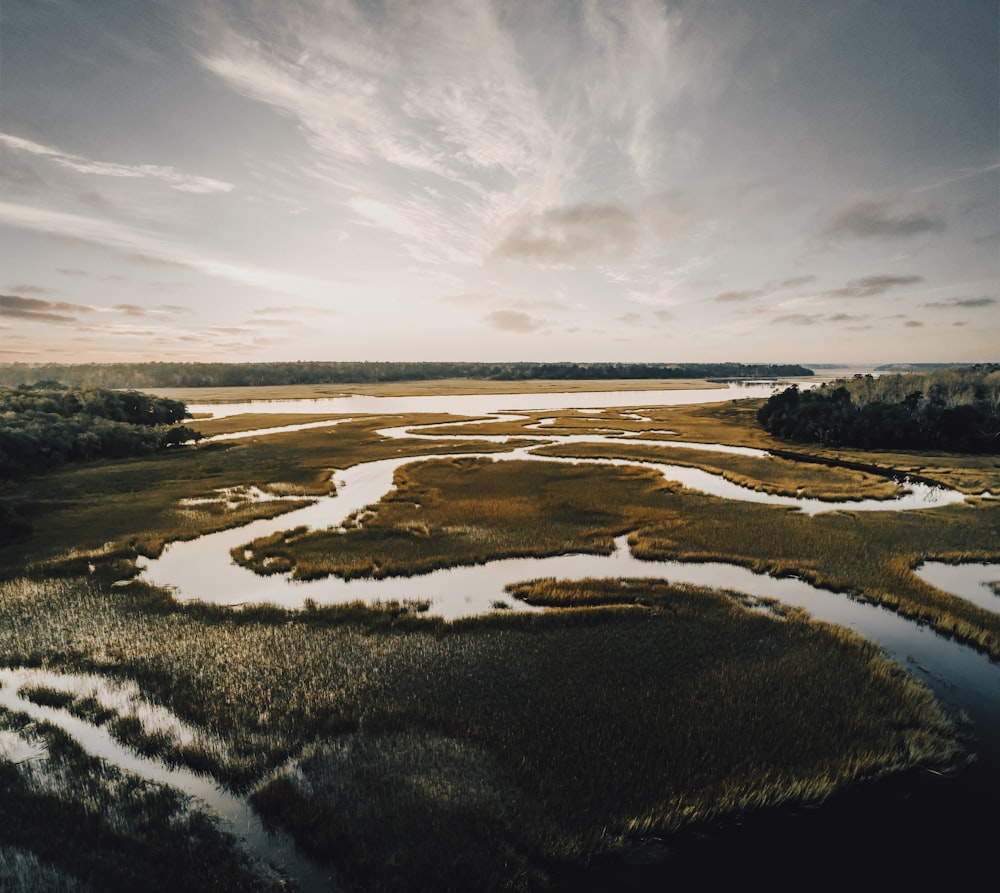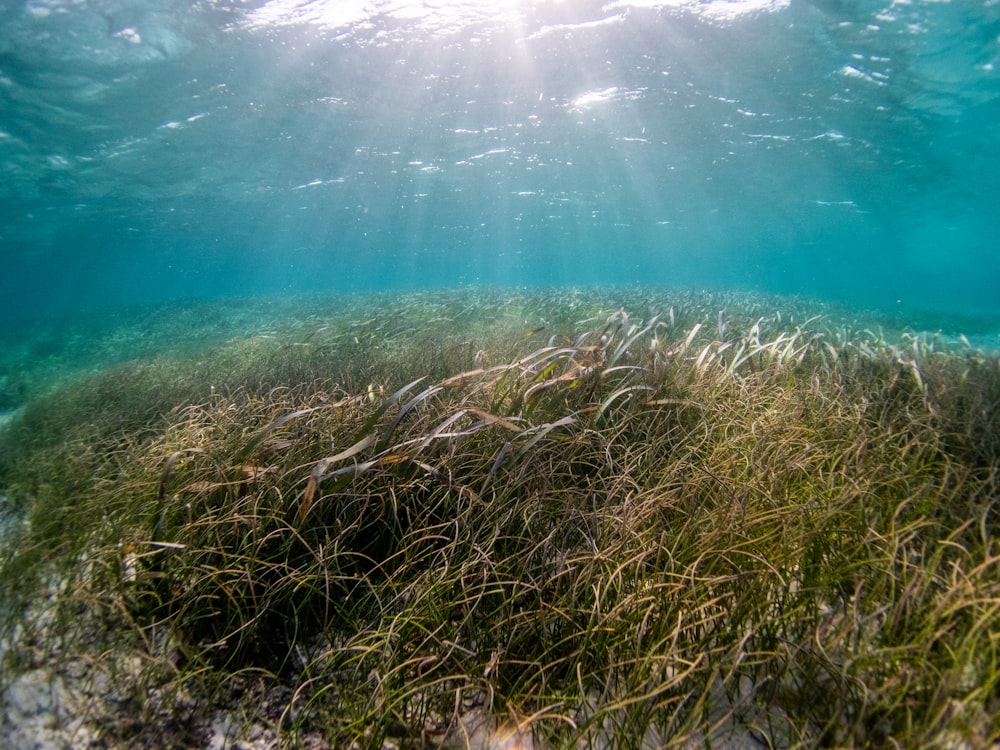Repost: Banking on 'blue carbon'
Everything you need to know about carbon credits sourced from the ocean
Governments and corporations are beginning to realise the value that marine ecosystems provide as a carbon sink, an economic growth engine, and a source of coastal protection.
In July 2022 I published an article on the economic value that mangroves, tidal marshes and seagrass meadows provide, while also delving into the nascent market for ‘carbon credits sourced from the ocean’.
A recent study undertaken by Stanford University on the small South American country of Belize has gone one step further and quantified the economic value that mangroves provide. The researchers hope that the study will help encourage other countries to develop their own ‘blue economy’, while also helping to meet their Nationally Determined Contributions (NDC’s).1
In comparison to other nature-based carbon projects that have suffered weaker prices and integrity concerns, blue carbon credits have seen strong demand. For example, a recent auction of 50,000 carbon credits tied to the Delta Blue Carbon Project (DBC-1) in Pakistan, the world’s largest mangrove restoration project, achieved an average price of $29.72 per tonne of CO2. This was broadly in line with prices achieved at a much larger auction of credits from the same project last November (see Under the hammer).2
My original article was published behind the paywall, but considering the timeliness of the issues raised I’ve decided to remove it for the benefit of all Carbon Risk subscribers. I hope you find it useful and please leave a comment.

In previous articles I’ve written about the planet’s carbon removal scarcity problem, why competition for land and commodities means that nature based carbon credits need to rise, and why technological solutions may ultimately be required to meet net-zero targets.
We can push the envelope of carbon removal options even further. Just off the coast, and deep beneath the water lie other sources of natural capital that can be exploited to sequester carbon from the atmosphere.
‘Blue carbon’ as it’s known includes mangrove forests, tidal marshes and seagrass meadows.
According to the United Nations Educational, Scientific and Cultural Organization (UNESCO), blue carbon assets are among Earth’s most efficient absorbers and long-term repositories of carbon.
For example, mangrove forests can store more than 1,000 tonnes of carbon per hectare, more than four times the amount sequestered by terrestrial forests. Seagrass can suck up even more, ingesting 15 times as much carbon per year for the same area of forest.
Alongside seaweed farming, protecting and restoring these marine ecosystems could reduce global carbon emissions by as much as 1.4 billion tonnes of CO2-equivalent emissions annually by 2050, according to the World Resources Institute (WRI).3
Underwater blues
These coastal and marine ecosystems store more carbon than terrestrial ecosystems. However, they are just as vulnerable to damage as land-based natural capital assets. Infrastructure development, land-use conversion and poor waste management are all factors that can damage blue carbon assets.
Disturbing a hectare of mangroves releases as much carbon as cutting down between 3 and 5 hectares of tropical forest. Mangroves are thought to be eroding at about 2% per annum, while seagrasses are estimated to be disappearing at a rate of between 2% and 7% per year.
Unlike other blue carbon assets, much less is known about changes in tidal marsh acreage. Whist tidal marshes have been mapped on a local and national level, no attempt has been made to map the distribution and extent of tidal marshes on a global level, preventing any accurate estimate of overall decline rates.

The blue carbon wealth of nations
Seagrass beds are found in all regions, from cold polar waters to the heat of the tropics. Tidal marshes are also found across the globe, but are most commonly located in temperate areas including North West Europe and Australia. In contrast, mangroves are typically confined to tropical and sub-tropical areas.
The three countries generating the largest positive net blue carbon contribution for the world are Australia, Indonesia and Cuba (see Africa's "green superpower"). However, not all countries are in the same position to benefit from this blue carbon wealth, reflecting the different stages in project development of the three blue carbon assets.
Covering almost 50 million hectares, blue carbon assets also help protect vulnerable coastal communities from extreme weather (e.g. reducing the risk of flooding), regulate water quality and provide a haven for seafood production. These co-benefits are significant and especially attractive to buyers of carbon credits.
Blue carbon financing beginning to bloom…
Blue carbon is a relatively new addition to the list of nature-based assets able to generate carbon credits. It was only in 2015 that offset certification company Verra published its first methodology to give credits to tidal wetland and seagrass restoration, before expanding its rules to cover wetland conservation in 2020.
So far, mangrove restoration is the most advanced kind of blue carbon credit project. The main projects centre on Africa and include ecosystems in Kenya, Senegal, and Madagascar. Indonesia, India and Colombia have also seen investment.

Overall, although some 20% of the world’s mangrove forests are likely to qualify for blue carbon financing4, only around 10% are thought to be financially sustainable as a blue carbon investment based on a carbon price of $5-$10 per tonne over a 30-year period (see Nature-based carbon credit prices need to rise).5
Mangrove carbon credits issued by projects located in Asia and Central America were being offered in the $13-$35 per tonne range as recently as October 2021. However, blue carbon credit prices appear to have softened along with the rest of the carbon credit market. As of April 2022 blue carbon credits typically sold for around $10 per tonne, according to Plan Vivo, another offset certification company with prices varying from as low as $2 per tonne all the way up to $20 per tonne depending on the degree of co-benefits included (see Plumbing the depths of the VCM).
There is far less activity involved in developing seagrass meadows and tidal marshes, partly reflecting data issues and other challenges. Australia, one of the three ‘blue carbon’ superpowers and home to about one-third of the plant’s tidal marshes will be hoping to rectify these issues as quick as possible if it is to steal a share of the market.
Interest in blue carbon credits tends to be especially strong from the shipping and tourism sectors, i.e. those businesses that have the greatest direct impact on marine ecosystems. But interest is growing from all corporates looking to offset their emissions and meet their net-zero commitments. Part of the reason is that blue carbon credits are seen as particularly high quality because of their carbon sequestration potential and their co-benefits.
…but questions remain as to how far they can be scaled
Although blue carbon projects do not appear to have any adverse impacts on human development (such as reducing land use available for growing crops), it’s still unclear whether or not there are long-term side-effects. For example, it’s unclear whether their large scale development would undermine marine life elsewhere, or create other unintended consequences. The fact that these projects lie in areas which can be difficult to access complicates the ability to monitor their progress.
Related to this is the question of permanence. Underwater assets have the advantage of not going up in smoke at the first sign of hot, dry weather but they face their own risk such as whether a storm would uproot the blue carbon asset, releasing the carbon stored within the soil. For unlike land-based forests which store most of the carbon within the actual tree, blue carbon assets sequester and store the captured carbon in the soil lying beneath them (see The planet's carbon removal scarcity problem).
Blue carbon credits appear to offer a bankable route to carbon removal and storage, avoiding many of the pitfalls plaguing land nature-based carbon projects. Mangrove offset projects in particular are ready to take the next step to wider acceptance. As with nature-based offsets located on land, those countries that are able to monetise their natural ‘blue carbon’ capital may gain a crucial first mover advantage.
https://www.nature.com/articles/s41559-023-02081-1
https://tribune.com.pk/story/2422073/carbon-credits-auction-for-pakistan-mangrove-project-oversubscribed
https://www.wri.org/insights/turning-tide-ocean-based-solutions-could-close-emission-gap-21
Carbon credits can only be issued when a project proves its additionality, i.e. it would not exist in the absence of carbon finance.
https://www.sciencedirect.com/science/article/pii/S0960982221001354




